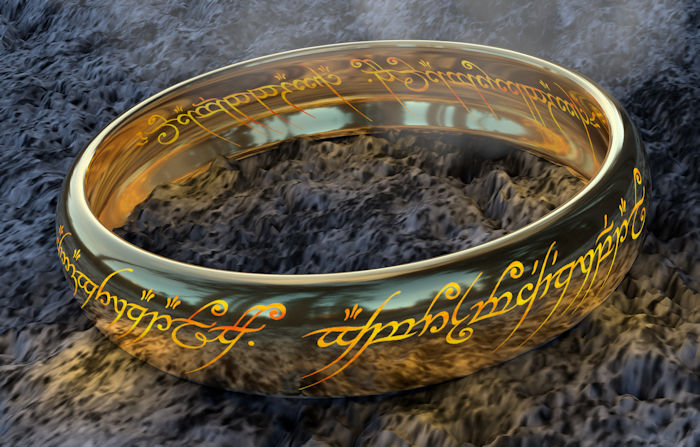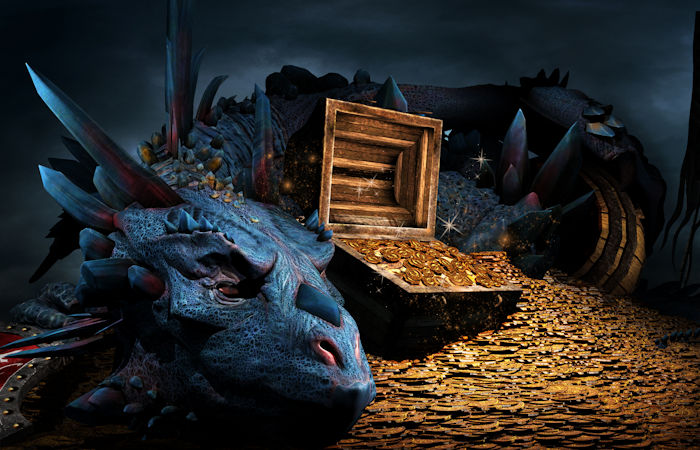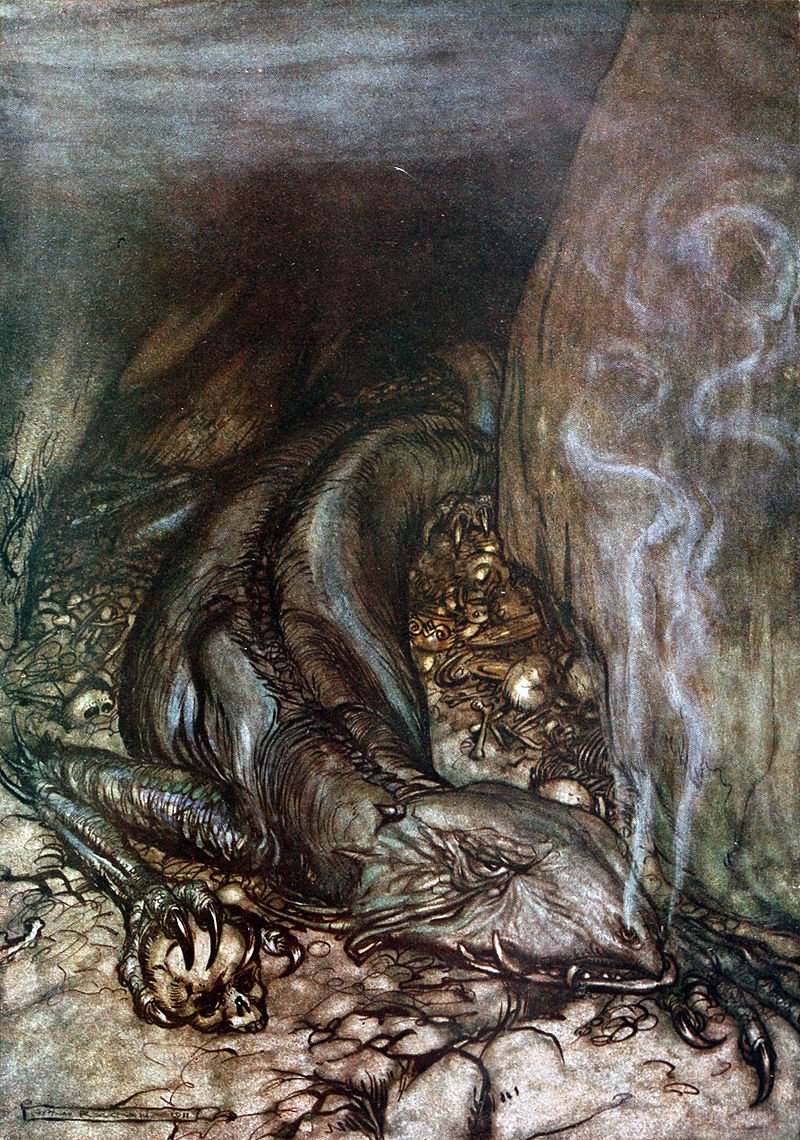Cursed Dwarf Fafnir Turned Into A Fearsome Norse Dragon And Guarded The Stolen Magical Ring Andvaranaut
Ellen Lloyd - AncientPages.com - Everyone who came in contact with the magical ring Andvaranaut died and Fafnir should have known better than kill his father and steal the priceless ring that was cursed, but he was a greedy Norse dwarf who wanted all the priceless treasures for himself. For a while, he got away with his wrongdoing, but fate caught up with him eventually and he was punished for his crime.
In Norse mythology, Andvaranaut, also called Andvari’s loom, is a powerful, magical ring capable of producing gold. It was forged by the shape-shifting dwarf Andvari who could turn himself into a fish at will.Credit: Adobe Stock - veraverunchik
The story of shape-shifting Fafnir can be found in the Icelandic Volsunga Saga. Like many other Norse myths, it describes adventures of the Gods, remarkable magical treasures, and curious shape-shifting beings that possess unusual powers. In Norse mythology, dwarfs play a very prominent role, and these beings can be good or evil.
Hreidmar, the King of the Dwarf People, had three sons. Fafnir was the eldest and gifted with a fearless soul and a powerful arm. The second son, Otter was a shape-shifter, and then there was Regin, who built a house of gold to please his father.
The description of Fafnir is quite interesting. According to the Norse Saga, no one dared to approach Fafnir because of his fierce glances and Ægis helmet. His fearsome appearance was one reason he guarded his father's gold house.
One day, something terrible happened. The three gods Odin, Hoenir, and Loki were walking by a stream in Midgard, one of the mysterious nine worlds of Yggdrasil, the sacred tree of life in Norse mythology.
The world of humans is called Midgard (or Mannheim) and is located exactly below Asgard. It is surrounded by vast oceans that cannot be passed and coiled by the Midgard Serpent, an evil, huge sea serpent, Jormungand, yet another child of Loki, the trickster god.
Trickster God Loki killed the otter and flung it over his shoulder. He did not know that being something of a magician, Otr often took the form of an otter during the day.
The three gods continued their journey until they came to the house of Hreidmar where they asked for shelter for the night. At first Hreidmar was welcoming enough, but when he saw the otter, he shouted in rage and grief, for the dead creature was his son. Hreidmar summoned his other two sons, Regin and Fafnir. Then, with his magic spells, he disarmed the gods and bound them.
Credit: Adobe Stock - Melkor3D
God Odin told Hreidmar that he and his companions would pay whatever ransom he asked. Hreidmar and his sons demanded that the otter’s skin be stuffed with gold treasures. Loki, the most cunning of the gods, went straight to where he had killed the otter and stared into the water. Soon he saw what he was looking for, an enormous pike guarding the entrance to an underwater cave that gleamed with gold. The pike was the dwarf Andvari, keeper of the fabled treasure- the magical ring Andvaranaut.
To save his life, the dwarf Andvari gave up his hoard of gold. He begged Loki not to take the Andvaranaut ring from him, but Loki snatched it and put it on his finger. Andvari laid a terrible curse upon the ring, vowing that anyone who wore it would be smitten with ill fortune and death.
Fafnir guards the gold hoard in this illustration by Arthur Rackham to Richard Wagner's Siegfried.
Arthur Rackham -; Rackham, Arthur (illus) (1924-August) [1911] Siegfried & The Twilight of the Gods. Credit: Public Domain
Hreidmar and his sons were delighted to get so many gold treasures. Otr’s ransom was paid, and the three travelers were allowed to go, but it did not take long before Andvari’s curse began to operate.
Fafnir decided he wanted the whole treasure and didn’t want to share the gold with his father and brother. So, he killed his father, and when Regin came to claim a share, he drove him scornfully away and bade him earn his own living.
Fafnir was now so greedy that he decided to guard his treasure day and night. The dwarf went out into the wilderness to keep his fortune, eventually turning into a dragon, and he breathed poison into the land around him so no one would go near him and his treasure, wreaking terror in the hearts of the people.
But his brother Regin was determined to get his revenge, and he sent his foster son Sigurd to kill the dragon. So, the greedy Fanfnir dwarf died, and the curse's effectiveness was proven again. It was better to stay away from the magical ring Andvaranaut, no matter how beautiful and priceless it was.
Updated on January 26, 2022
Written by Ellen Lloyd – AncientPages.com
Copyright © AncientPages.com All rights reserved. This material may not be published, broadcast, rewritten or redistributed in whole or part without the express written permission of AncientPages.com
Expand for referencesMore From Ancient Pages
-
 Little People: Ancient Race That Pre-Dates Native Americans, Celts, And Other Settlers Worldwide
Featured Stories | Aug 29, 2024
Little People: Ancient Race That Pre-Dates Native Americans, Celts, And Other Settlers Worldwide
Featured Stories | Aug 29, 2024 -
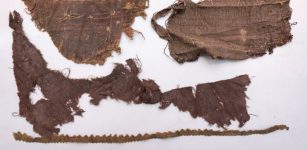 Unique Well-Preserved 16th-17th Century Fabrics And Shoes Found In Toruń, Poland
Archaeology | May 13, 2024
Unique Well-Preserved 16th-17th Century Fabrics And Shoes Found In Toruń, Poland
Archaeology | May 13, 2024 -
 Pre-Columbian Americans Mastered Electricity – Ancient Inscription And Document Reveal Proof Of Advanced Ancient Technology
Ancient Technology | Feb 4, 2018
Pre-Columbian Americans Mastered Electricity – Ancient Inscription And Document Reveal Proof Of Advanced Ancient Technology
Ancient Technology | Feb 4, 2018 -
 Secret Underground Chambers Of Caynton Caves And The Knights Templar Connection
Featured Stories | Aug 13, 2019
Secret Underground Chambers Of Caynton Caves And The Knights Templar Connection
Featured Stories | Aug 13, 2019 -
 Susanoo-no-Mikoto – Shinto God Of The Sea And Storms Was Banished From Heaven
Featured Stories | Nov 23, 2018
Susanoo-no-Mikoto – Shinto God Of The Sea And Storms Was Banished From Heaven
Featured Stories | Nov 23, 2018 -
 Evidence Of The Moon-Eyed People – More Clues – Part 2
Civilizations | Dec 29, 2019
Evidence Of The Moon-Eyed People – More Clues – Part 2
Civilizations | Dec 29, 2019 -
 Sybil Ludington: Courageous American Girl Who Rode For Independence
Featured Stories | Dec 19, 2020
Sybil Ludington: Courageous American Girl Who Rode For Independence
Featured Stories | Dec 19, 2020 -
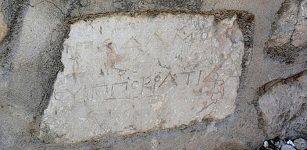 2,300-Year-Old Tablet Found In Mugla, Turkey – Region Of Great Historical Importance In Ancient Times
Archaeology | Jun 5, 2019
2,300-Year-Old Tablet Found In Mugla, Turkey – Region Of Great Historical Importance In Ancient Times
Archaeology | Jun 5, 2019 -
 Ancient Byblos: Powerful Phoenician City With Own Kings
Civilizations | Apr 23, 2016
Ancient Byblos: Powerful Phoenician City With Own Kings
Civilizations | Apr 23, 2016 -
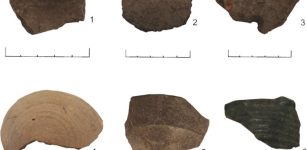 Earliest Evidence Of Wine Consumption In The Americas Found In Caribbean
Archaeology | May 23, 2023
Earliest Evidence Of Wine Consumption In The Americas Found In Caribbean
Archaeology | May 23, 2023 -
 Cosimo di Giovanni de’ Medici – Exile Of The Generous, Intelligent Banker Caused Fury In Renaissance Florence
Featured Stories | Apr 7, 2021
Cosimo di Giovanni de’ Medici – Exile Of The Generous, Intelligent Banker Caused Fury In Renaissance Florence
Featured Stories | Apr 7, 2021 -
 ‘Impossible’ Ancient Knowledge Of The Gods’ Star – Mysterious Beings – Part 2
Featured Stories | Sep 4, 2021
‘Impossible’ Ancient Knowledge Of The Gods’ Star – Mysterious Beings – Part 2
Featured Stories | Sep 4, 2021 -
 Unusual Viking Secret Hidden Underground In California Reminds Of A Similar Discovery In Colorado
Featured Stories | Sep 12, 2024
Unusual Viking Secret Hidden Underground In California Reminds Of A Similar Discovery In Colorado
Featured Stories | Sep 12, 2024 -
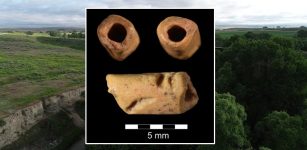 Oldest Bead In America Discovered At La Prele Mammoth Site, Wyoming
Archaeology | Feb 13, 2024
Oldest Bead In America Discovered At La Prele Mammoth Site, Wyoming
Archaeology | Feb 13, 2024 -
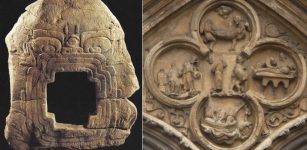 Quatrefoil Symbol Was Used By The Olmecs And Maya Long Before It Appeared On Christians Churches
Ancient Symbols | Mar 19, 2018
Quatrefoil Symbol Was Used By The Olmecs And Maya Long Before It Appeared On Christians Churches
Ancient Symbols | Mar 19, 2018 -
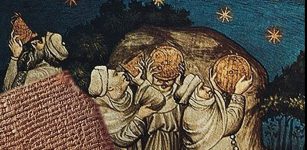 MUL.APIN Tablets: Babylonian Knowledge Of Astronomy And Astrology Recorded In Cuneiform Writing
Artifacts | Sep 27, 2019
MUL.APIN Tablets: Babylonian Knowledge Of Astronomy And Astrology Recorded In Cuneiform Writing
Artifacts | Sep 27, 2019 -
 10 Types Of Ancient Crosses In Different Cultures Explained
Featured Stories | May 23, 2017
10 Types Of Ancient Crosses In Different Cultures Explained
Featured Stories | May 23, 2017 -
 7,000-Year-Old Male Skeleton In Garment Decorated With Sea Shells, Red Deer Teeth Identified In France
Archaeology | Mar 9, 2017
7,000-Year-Old Male Skeleton In Garment Decorated With Sea Shells, Red Deer Teeth Identified In France
Archaeology | Mar 9, 2017 -
 Sinister Manchac Swamp And The Chilling Curse Of Julia Brown
Featured Stories | Aug 25, 2021
Sinister Manchac Swamp And The Chilling Curse Of Julia Brown
Featured Stories | Aug 25, 2021 -
 Controversial Ancient Takenouchi Documents Could-Re-Write Our History – Story Of Gods, Lost Continents And Ancient Sages
Featured Stories | Apr 28, 2017
Controversial Ancient Takenouchi Documents Could-Re-Write Our History – Story Of Gods, Lost Continents And Ancient Sages
Featured Stories | Apr 28, 2017

